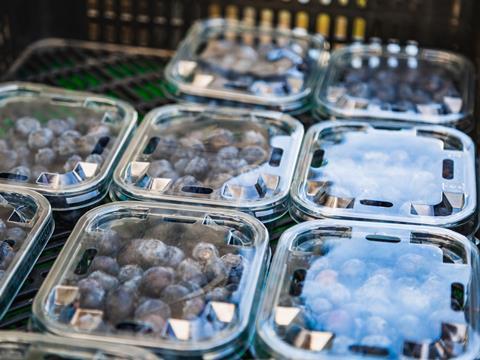
A strategic partnership between Sulayr, BASF, OEM Bobst and Evertis has led to the development of a recycling process for multi-layer PET with water-based adhesives that allows the PET to be separated and reused as part of a closed-loop system by the companies involved.
The process involves a multi-layer film produced by Evertis comprised of PET and PE layers, which is laminated with BASF’s Epotal water-based adhesive and processed with a Bobst coater. Sulayr says that it separates the multi-layers and makes the PET available for re-use, with the recycled PET delivered to Evertis and other film producers to restart the film production cycle.
The process is reportedly applicable to both post-consumer and post-industrial multi-layer waste. According to the company, the speed and cost-effectiveness of the process depend on the debonding of the films.
Miguel Ángel Arena, CEO of Sulayr, explains: “Our technologies enable us to delaminate most types of PET-containing multilayers and bring the recycled PET back to the industry.
“However, we see a difference in the trays coming from the post-use phase to our facility. With BASF’s water-based Epota adhesives for example, our separation process is simplified, because the adhesive allows a quick and easy separation with a high quality of the recyclates which is not the case with solvent-based adhesives for example.
“We are sure that a streamlined process can help scale up the recyclability of PET-based multilayers, giving the packaging industry a new way to meet its sustainability challenges.”
Thomas Peter Schiele, vice president of adhesives, fibre bonding and paper coating chemicals at BASF, adds: “This collaboration can be game-changing for the future of flexible packaging. It demonstrates that a circular economy for PET-based packaging is commercially possible – if we all work together.
“When it comes to recycling and debonding on multilayers we see good results with our water-based adhesives which can be key in this process, and we are confident that we can improve this process even further.
“At BASF, we are working on special adhesives that enable even easier separation under certain conditions. The more we do to demonstrate the viability of the process, the quicker it can become standard for all lamination adhesives – which would take the recycling of multilayers to the next level.”
Sulayr says that the process can be enhanced by producing all PET/PE trays under specific conditions to facilitate easy separation, with collaboration being key to this. As part of the new strategic agreement, for example, Evertis qualifies its new laminate as recyclable in Sulayr’s process, ensuring its layers can be separated more easily before bringing it to market.
Rui Silva, chief product and innovation officer at Evertis, comments: “This cooperation is a best practice for the packaging industry and significant for the future of multilayer packaging materials.
“The requirements of the Green Deal compel us all to do everything within our power to scale up the sustainability of our products, and to implement systemic changes to future-proof our industry. I am proud of the contribution this project makes to that goal.”
Sara Alexander, marketing and communication manager of flexible packaging at Bobst, says: “We want to move forward, collaboratively as one industry, towards a sustainable future for all forms of flexible packaging. As a manufacturer of printing and converting machinery, we have a duty to contribute to a future-proof, recyclable solution.
“We have done so by developing our equipment platform in terms of the most suited coating technology, process agility and speed with waterbased adhesives to meet the project’s scope. Now, thanks to all the partners’ contribution, we have an opportunity to secure that future for PET-based multilayer laminate.”
The companies are looking to develop conversations around best-practice processes for enhancing the collection and recycling of multi-layer PET packaging. They identify associations such as Petcore and CEFLEX as some of the key value chain players leading these discussions, and hence potential collaborators going forward.

















No comments yet